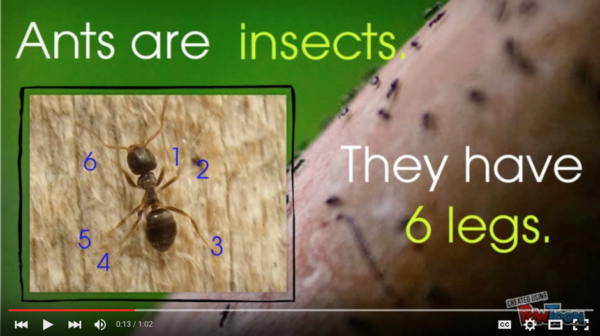Using In-Flipping In K-2 Science Education
Flipped learning has transformed teaching and learning in the secondary and tertiary years. Most people start their flipped learning journey in mathematics. In K-2, a form of flipped learning, in-flipping, can help teachers build relevant scientific field knowledge as well as promote independence and higher order thinking skills in the youngest of students.
One of the hurdles of science education in the early years is the need to build students’ knowledge of topic areas so that they can confidently talk, read and write about the topic using relevant, age-specific resources. Science resources for the early years, especially for children at the beginning reading levels, are few and allocating time to specifically teach important vocabulary is often difficult in a time-poor classroom. Putting on a commercially made documentary is easy, but does it cater for an early years’ audience? A teacher-created flipped video targets vocabulary that is needed to complete classroom tasks.
In-flipping allows this information to be taught to students in a multi-sensory format, which also allows students to direct their own learning. When used during the literacy block, the flipped video essentially becomes another teacher in the room, teaching the students important concepts and field knowledge.
Implementation
Several guiding principles help foster and develop the independence required for engaging in flipped tasks:
- Use graphic organisers, such as a retrieval chart or Venn diagram, for students to show their learning. This gives the students a purpose for watching the video while at the same time putting into practice the essential skills of note taking. The information the students extract from the flipped video is used in both science lessons and explicit informative writing lessons.
- Place important words in different colours so that students can actively identify the keywords needed to complete their graphic organiser. The words can also be key scientific terms needed in science lessons.
- Encourage students to use video tools to stop, pause, rewind and replay the video. This helps promote independence, allowing the students to self-direct their own learning.
- Make videos exciting. Students always see their teacher at the front of the room. Create videos with avatars using apps such as Tellagami or BuddyPoke. Spark students’ imagination by using green screen technology to transport the class to an exotic destination. Explore animated presentation web apps such as PowToon to excite students with simple, yet effective effects.
- Create a series of videos on similar concepts. Make each video identical so that students can become familiar with the look, feel and format of flipped videos.
- Provide easy access. Embed YouTube clips in a class website or use QR codes so that students can readily access videos.
- Model good digital citizenship. Use Creative Commons images and music. Some editing apps, such as PowToon, iMovie and YouTube Editor have a fantastic library of Creative Commons images, video and music.
Teaching students how to be independent learners in an in-flipped environment builds the essential skills needed to engage in flipped learning tasks in the later years of schooling.


Latest posts by Alfina Jackson (see all)
- 5 Mins with Alfina Jackson - July 3, 2016
You must be logged in to post a comment.


There are no comments
Add yours